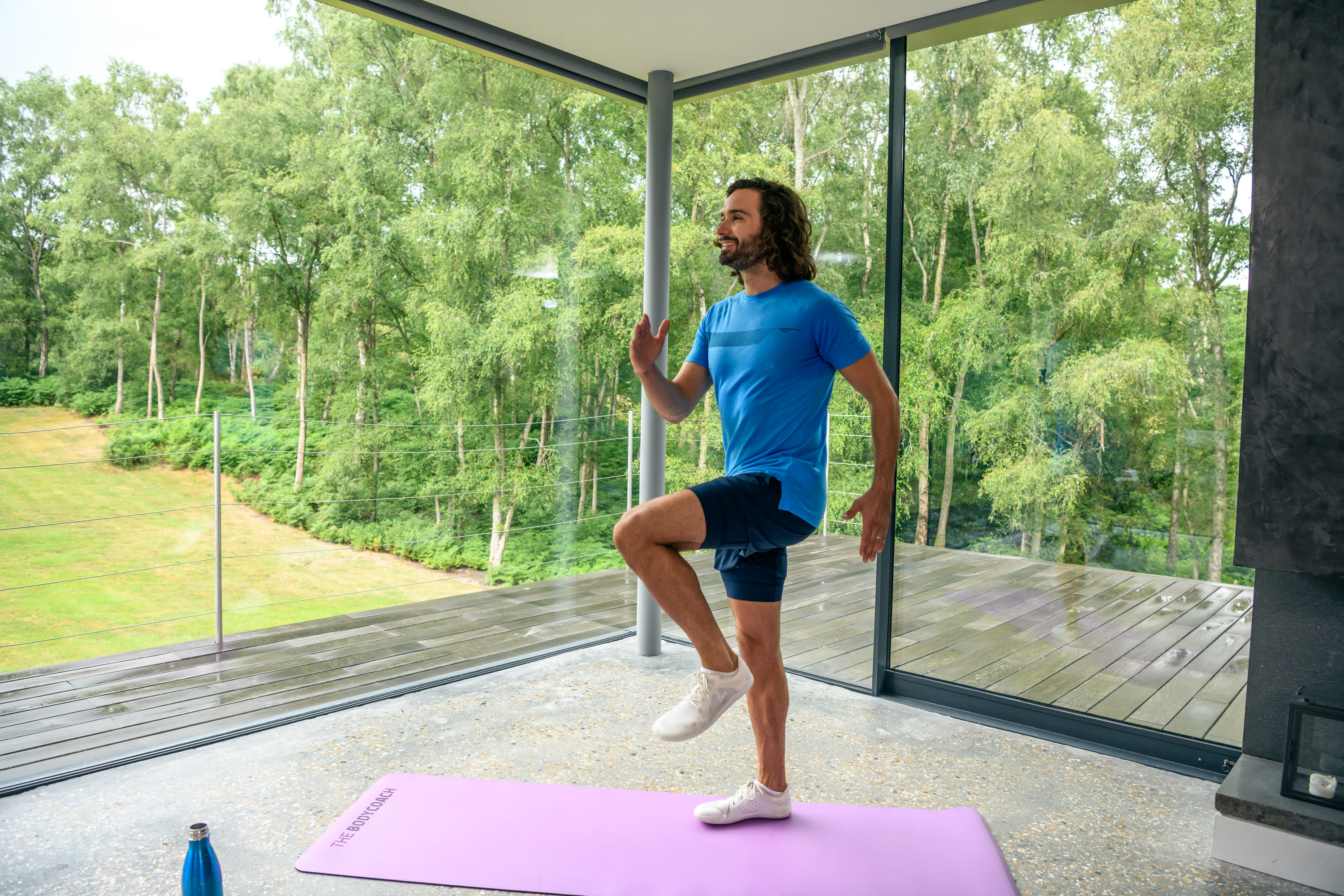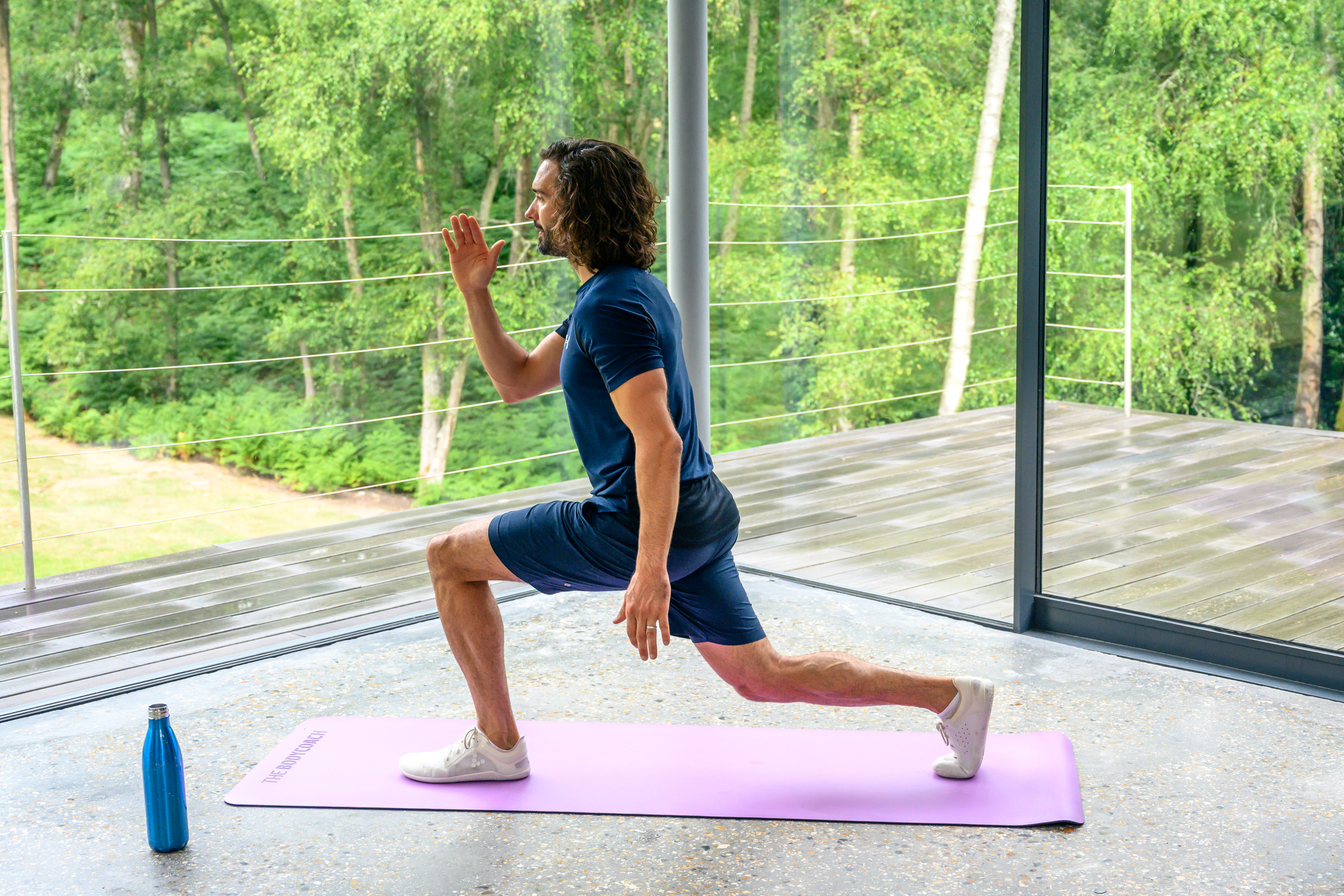“I’m in the best shape I’ve ever been at 45 – here’s how”
“This app has genuinely changed my life,” says Jill, 45, who joined The Body Coach in January 2025.
Sign up to The Body Coach newsletter to get inspiration in your inbox every Monday.

Hands up if you regularly skip the warm up when you work out? Be honest now. If you often dive straight into a sweat session because you think the warm up isn't that important or maybe you're not sure what to do, then one thing's for sure, you're not the only one.
But warming up is an important part of any workout and offers a huge range of benefits that include cutting your risk of injury, improving your performance and helping with recovery. That's a lot of upside for just 10 minutes focus.
In this post, freelance writer Natalie Roberts walks us through everything you need to know to get the warm up back into your workout.
The purpose of a warm up is to get your body ready to workout by gradually increasing your internal body heat. Although it might seem like a waste of time, a thorough warm up raises your heart rate and increases the blood flow to your muscles, easing any tightness as well as mobilising your joints so they're able to move freely through as full a range of movement as possible.
Some of the benefits of going through the warm up process include:
1. Reducing injury
A study published in BMC Medicine found that effective warm up strategies can actually reduce the risk of injury from exercise because warming up your body makes your muscles and tendons become more elastic, so they'll be able to cope with the stress put on them while you're smashing out burpees and squat jumps.
2. Feeling more energised
Juha Oksa PhD, a senior scientist at the Finnish Institute of Occupational Health, told us: "With a good warm up, you activate different energy pathways to be ready for the actual exercise, and also activate neural mechanisms for good performance. This is not an exhaustive list but, in a way, you warm up the engine." If reading that feels like trying to interpret another language, it basically means warming up properly prepares your body's nervous systems and energy systems for what's about to come.
3. Getting in the zone
Doing a warm up also gives you time to mentally process what you're about to do for your workout. This helps you switch off from all the other things going on and frees space in your head so you can focus on the workout.
4. Improving performance
Can a warm up really affect your performance? Well, according to a study published in The Journal of Strength and Conditioning Research, it can. The study reviewed 32 previous studies which looked at the performance enhancing effects of warming up, and it showed that completing a full warm up improved performance in 79% of the studied criteria, with the improvement ranging from 1 to 20%! Improvements were recorded in various sports and exercises, including cycling, running, swimming, jumping and kicking.
Warming up for something like running requires a more general approach than something like getting ready to do a HIIT workout.
The main thing to remember when planning your warm up is to think about what exercises feature in your workout so you can select movements for the specific muscle groups you'll be targeting.
What are the key moves for a pre-HIIT warm up?
Now we know a warm up should be tailored to the workout, how exactly do we make sure we're doing this? High intensity exercise asks a lot of your body in a short period of time, so a light stroll before you start throwing yourself into lunge jumps might not be the best idea. For HIIT, you need to make sure your whole body is ready for the beasting it's about to go through.
Dr Oksa explained that a good structure for a warm up is to start with light intensity aerobic activity, followed by dynamic stretching and some sport-specific dynamic activities, which are movements similar to the things you're likely to do in the actual workout.
So let's break down the warm up:
For the light intensity aerobic part, you could do something simple like jogging on the spot to get your heart rate up a little.
For the dynamic stretching part, there are loads of options to choose from, depending on what exercises are in your workout. Some things you could include, which Joe likes to use in his warm ups, are sumo squats, shoulder rolls, twisting toe touches, Spiderman lunges, walkouts (with a push up if you can) and some lunges with a twist. If you feel like you need to use Google translate again to understand what any of those things mean, let alone how to do them, don't worry – Joe has some great warm up videos you can follow. Don't go crazy with it though – this is just the warm up, after all.
Finally, it's time for the sport-specific dynamic activities part. Typically, a HIIT workout will involve short, sharp bursts of high intensity exercise, and there tends to be a fair bit of jumping too. Some specific exercises that work well as a warm up for jumping workouts include bodyweight quarter and half squats, stool stepping and jogging. As it's just the warm up these should all be performed at light intensity. Remember, the aim is to prepare your body for what's about to come.

Spotting when you're fully warmed up is not quite as simple as just feeling warm. Dr Oksa told us: "There are no general guidelines (e.g. heart rate) to identify when you're ready to exercise, it is very much dependent on the individual." One reason for this is because everyone has a different resting heart rate depending on various things, including fitness levels. So there is no 'one size fits all'.
One of the signs that you're warmed up is that your breathing frequency has reached a steady state (you're not panting) and breathing feels easy (no compressive feeling in your chest), explains Dr Oksa. "With a given sub-maximal (fairly low) work intensity this should occur in about 2-8 minutes," he says.
The general guide given by the American College of Sports Medicine matches up with this, saying a warm up should consist of 5-10 minutes of low intensity exercise with the intensity gradually progressing towards the end. So there's no point in trying to rush the warm up to get it done quicker, as the whole point of it is to ease into the workout.
If you've heard these names mentioned before but have no idea what they are, dynamic stretches are basically movements that also involve a stretch, for example a lunge. By contrast, static stretches are held for a specific amount of time with no movement, like touching your toes.
In the same way that a warm up is important to prevent injury, the cool down is too. A study published in the Strength and Conditioning Journal, which compared the research of various studies and books, found that a cool down might actually minimise DOMS (Delayed Onset of Muscle Soreness) – the achy muscles you get a day or two after exercise.
A cool down typically involves 5-10 minutes of gentle cardio that gradually decreases in intensity (the reverse of a warm up), followed by some static stretches to relax your body back to its pre-exercise state. Gradually lowering the intensity with a cool down is much better for your body than just ending your workout suddenly.
Although finding the extra time to warm up and cool down might seem like a drag, it's essential if you want to get the most from your training while looking after your body.
So set aside those extra minutes and go smash your workout!
Written by freelance writer Natalie Roberts.